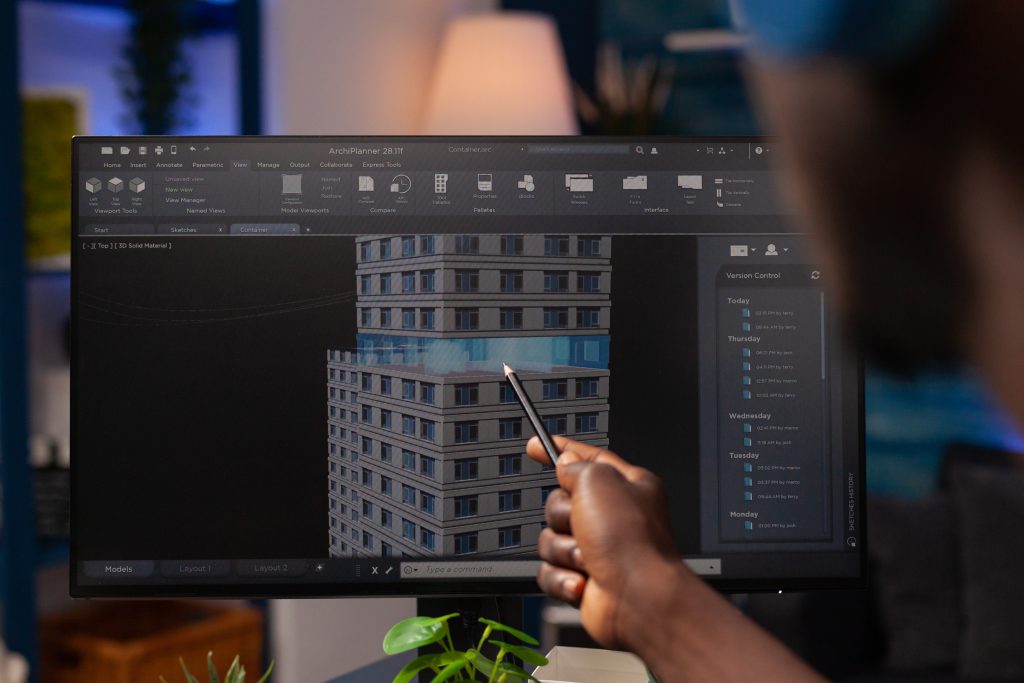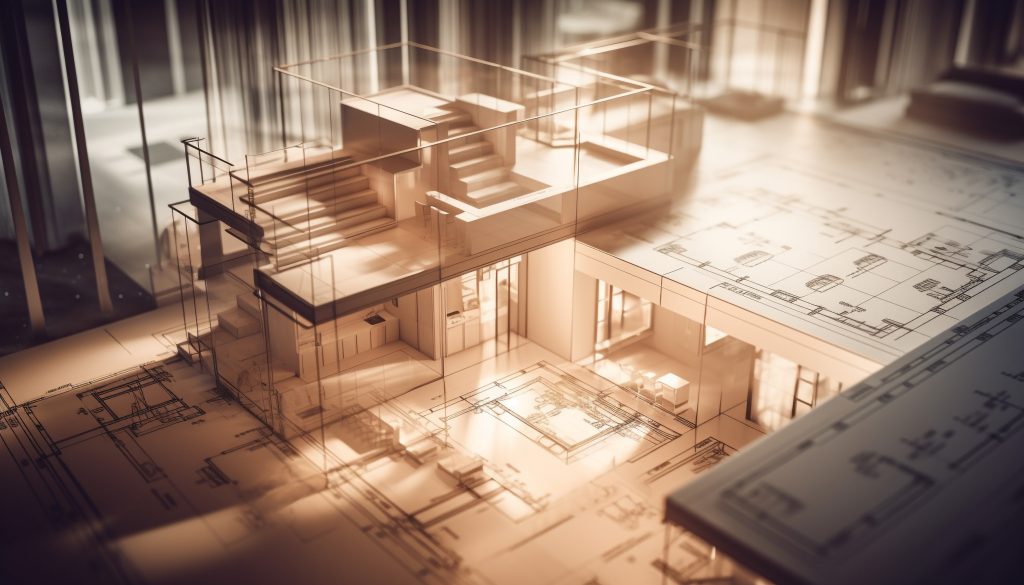AI as an Assistant, Not a Replacement:
As technology continues to advance, its impact on various industries deepens. In architecture, AI and other cutting-edge technologies are transforming how professionals approach design and construction. During AIA24 in Washington, DC, held in June 2024, several leading architects shared their perspectives on how AI is integrating into their current workflows and shaping their future visions for the industry.
Supporting Design and Construction Management
Shay Alster, AIA, Managing Partner at GF55 Architects, one of the leading firms in NYC, envisions AI as a valuable assistant in the construction process, particularly during the design phase. “AI can help ensure contractors and construction managers understand the intentions and solve problems effectively,” Shay notes. He underscores the necessity of the human touch in on-site interactions, emphasizing the tangible nature of real estate architecture. AI can enhance the interface between architects, builders, and on-site workers, ensuring a smoother design and construction process with a better understanding of plans and specifications, even as changes occur during the project.

Enhancing Human Capabilities
Shay firmly believes that AI should be viewed as an assistant rather than a replacement. “It can help with repetitive and time-consuming tasks, but the creative and intuitive aspects of design still require a human touch,” he asserts. The goal is to use AI to enhance capabilities and efficiency without losing the unique human elements essential to architecture. By handling tasks like note-taking in meetings and other administrative duties, AI tools can free up more time for design-focused tasks, ultimately improving the quality of design and the construction process.
Embracing AI and BIM Technologies:
Malcolm Jones, owner and principal architect of MAJ Architecture + Design and an adjunct professor at City Lab Orlando, part of the University of Florida Graduate School of Architecture, sees the future of architecture increasingly involving AI and Building Information Modeling (BIM) technologies. “Students and professionals need to be comfortable with these technologies to stay relevant,” he advises. Malcolm notes that AI tools are becoming crucial for conceptual design and master planning, enabling quick iterations and data-supported decisions. These technologies not only improve efficiency but also enhance the quality of designs by providing data-driven insights.
Integrating AI into New Practices
As the owner of a new practice, Malcolm is keen on integrating AI to streamline various processes. “AI can help manage client communications, automate routine tasks, and provide more accurate project timelines,” he shares. This integration allows him to focus more on creative aspects and client interactions, enhancing overall productivity and efficiency. AI tools assist in various design stages, particularly in generating multiple design alternatives during the conceptual phase and analyzing large datasets for better urban planning decisions.
AI in Remote Work and Future Vision:
Adapting to Remote Work

Jeremiah Russell, AIA, NCARB, RIBA, Principal Architect at Rogue Architecture, explains how the shift to remote work due to COVID-19 has accelerated the adoption of flexible business methods. “Technology has been pivotal in this transition. We now use AI-driven tools to collaborate and manage projects across different locations,” he explains. AI streamlines workflows, from design collaboration to project management, maintaining productivity even with dispersed teams. This adaptation demonstrates how AI can support modern architectural practices, making them more resilient and efficient.
AI and the Design Process
Fariba Makooi, Principal of Fischer + Makooi, one of NYC’s leading architecture firms, envisions technology continuing to shape the future of architectural practice in profound ways. One key area of impact will be the acceleration of initial studies, empowering clients to explore numerous design options quickly and make informed decisions early in the process. Furthermore, advancements in visualization techniques hold promise for creating more immersive experiences, allowing stakeholders to visualize the end product with greater realism and clarity. Fariba anticipates that technology will play a pivotal role in enhancing collaboration, efficiency, and creativity within architectural endeavors.
Enhancing Efficiency and Accuracy
Mark Allen Andre, AIA, a seasoned architect and director at the prestigious LSM in DC, highlights the significant advancements in technology and expresses curiosity about AI’s potential to streamline administrative tasks. “Technology has advanced significantly, and I’m curious to see how AI can help track the process of submittals and other documentation,” Mark says. He points out that managing these administrative duties is time-consuming and often detracts from the essential task of content review. Automating the tracking of submissions from contractors could significantly enhance efficiency, allowing architects to focus more on creative and high-value activities.
Balancing Technology with Intuition
While AI offers numerous benefits, Mark emphasizes the importance of maintaining a personal approach to design. “Each project is unique, and our process reflects that. Sometimes working with pencil and paper can be faster and more effective than relying on automated tools,” he explains. For Mark, the design process involves a significant amount of intuition and client collaboration, which technology should support rather than overshadow. The personal touch and intuition are crucial in design, and technology should complement these elements.
AI as Seen by Renowned Architects in the Summer of 2024:
The insights from these renowned architects reveal a common theme: AI and technology are seen as tools to enhance and streamline the architectural process, not to replace the human touch. While AI can take over repetitive and administrative tasks, the creative and intuitive aspects of design remain firmly in the hands of human architects. As technology continues to evolve, its role in architecture will likely expand, offering new ways to improve efficiency, collaboration, and the overall quality of designs. The future of architecture is a blend of advanced technology and human creativity, with architects leveraging technology to improve margins and address the persistent errors and omissions in the design and construction process. Could AI and technology be the solution?


